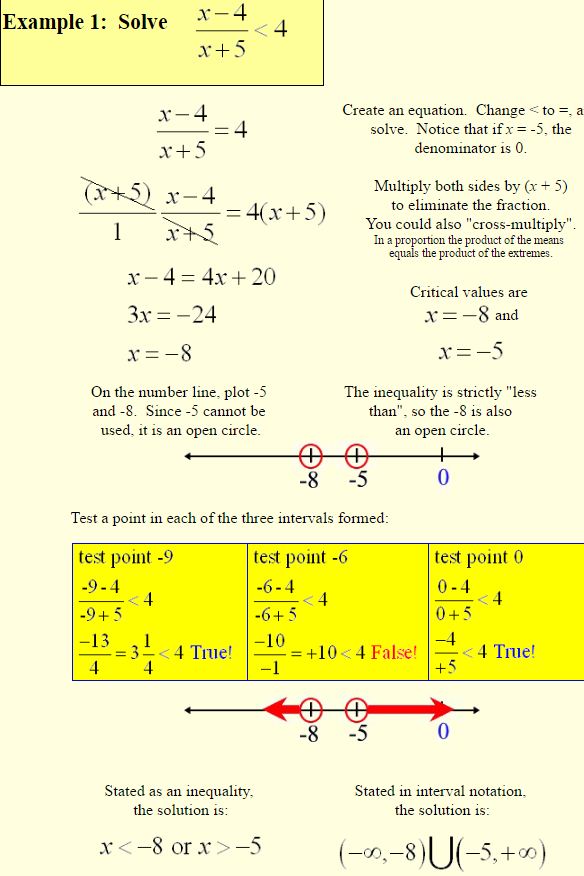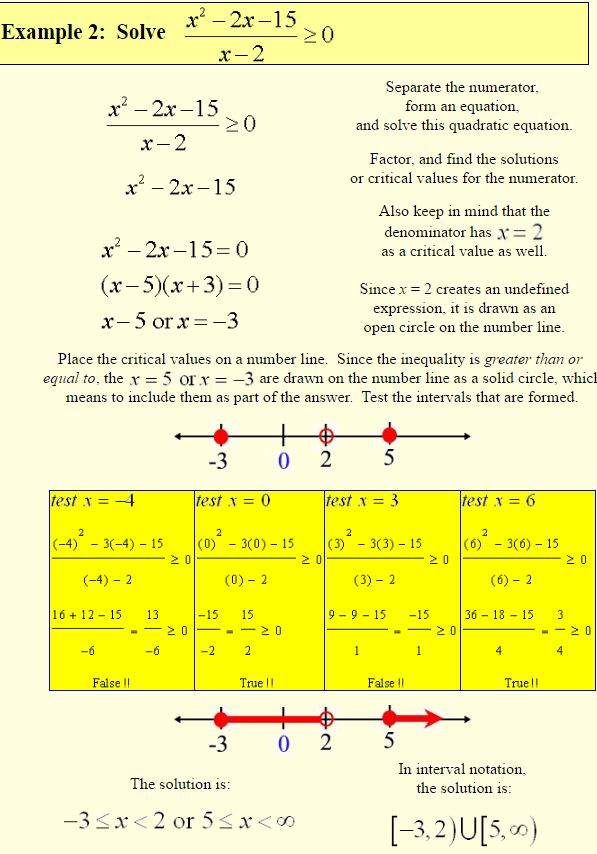Solving Rational Inequalities
A rational inequality is an inequality which contains a rational expression. When solving these rational inequalities, there are steps that lead us to the solution.
To solve Rational Inequalities:
(1) Write the inequality as an equation, and solve the equation.
(2) Determine any values that make the denominator equal 0.
(3) On a number line, mark each of the critical values from steps 1 and 2.
These values will create intervals on the number line.
(4) Select a test point in each interval, and check to see if that test point
satisfies the inequality. (Find the intervals which satisfy the inequality).
(5) Mark the number line to reflect the values and intervals that satisfy
the inequality.
(6) State your answer using the desired form of notation.

When the numerator of the inequality is a quadratic expression, combine the
Quadratic Inequality method of solution with this Rational Inequality method.
Check out this example.

